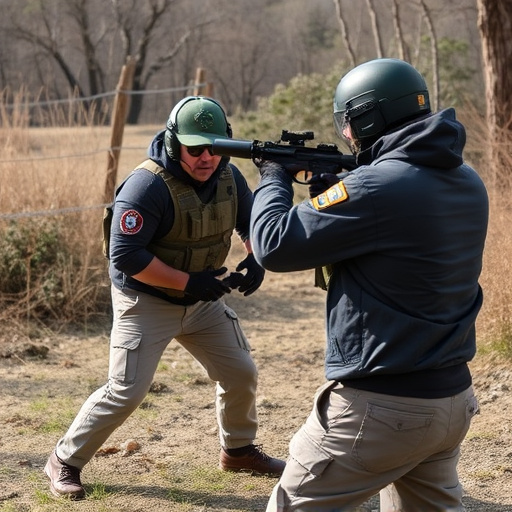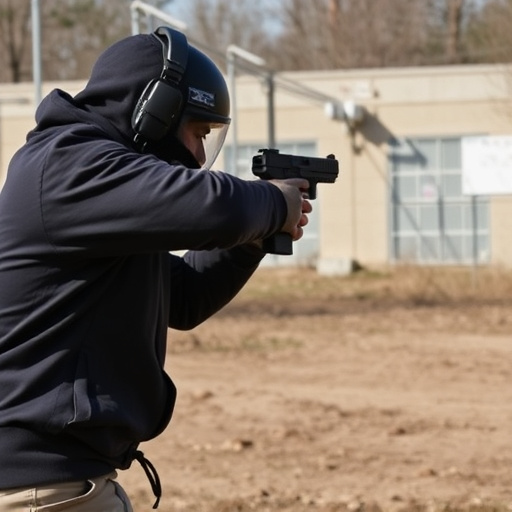Concealable stun guns for women prioritize compactness and discretion, which can affect electrode placement. Closer spacing ensures a more concentrated charge, enhancing control and speed in self-defense scenarios, particularly for close-quarters combat and users with smaller hands. Optimal electrode positioning is key to these stun guns' effectiveness, catering to women's needs for practical, functional, and concealed self-defense tools.
In today’s world, self-defense is a crucial consideration, especially for women. Among personal protection tools, concealable stun guns have gained popularity. However, understanding the effectiveness of electrode spacing is essential for optimal performance. This article delves into the intricacies of stun gun electrode placement, focusing on the specific needs of Concealable Stun Guns for Women. By exploring ‘optimal electrode placement’ and ‘stun gun electrode spacing,’ readers will gain insights to ensure personal safety.
- Understanding Stun Gun Electrode Spacing
- Optimal Electrode Placement for Concealable Stun Guns for Women
Understanding Stun Gun Electrode Spacing

Stun gun electrode spacing is a critical factor in determining the effectiveness of a stun device, especially for self-defense scenarios where speed and impact are paramount. Concealable stun guns designed for women often prioritize compactness and discretion, which can slightly alter electrode placement compared to larger models. The electrodes, typically metal contacts, are responsible for delivering an electric current that disrupts the nervous system, temporarily incapacitating the target.
In these compact weapons, closer electrode spacing ensures a more concentrated charge delivery, allowing for better control and potentially faster knockdown. This is especially useful in close-quarters combat or for individuals with smaller hands who may require quicker access to the device. Understanding how electrode spacing contributes to the stun gun’s performance can help users make informed choices when selecting self-defense tools, ensuring they have the best chance of effectively deterring potential threats.
Optimal Electrode Placement for Concealable Stun Guns for Women

When it comes to concealable stun guns designed for women’s self-defense, optimal electrode placement is a key factor in ensuring maximum effectiveness. Stun guns operate by delivering an electric current through two electrodes, which must be strategically positioned to enable proper contact with a target. For concealed carry devices, this means considering the body parts most likely to be used in self-defense scenarios, such as the arms, legs, or neck.
Women often prefer concealable stun guns that can be easily accessed and hidden, so electrode design should prioritize ease of use and discreetness. Compact, dual-electrode configurations are ideal, allowing users to target multiple areas with a single, swift motion. This not only enhances the weapon’s effectiveness but also contributes to its overall appeal as a practical self-defense tool tailored to women’s specific needs and preferences in terms of both functionality and concealment.
In understanding the critical role of electrode spacing in stun gun effectiveness, especially with focus on concealable stun guns designed for women’s self-defense needs, optimal placement ensures maximum impact. By adhering to best practices outlined in this article, users can maximize the stun gun’s potential, providing a reliable and discreet means of protection. For those seeking Concealable Stun Guns for Women, understanding electrode spacing is a key step towards making an informed choice that prioritizes safety and peace of mind.
